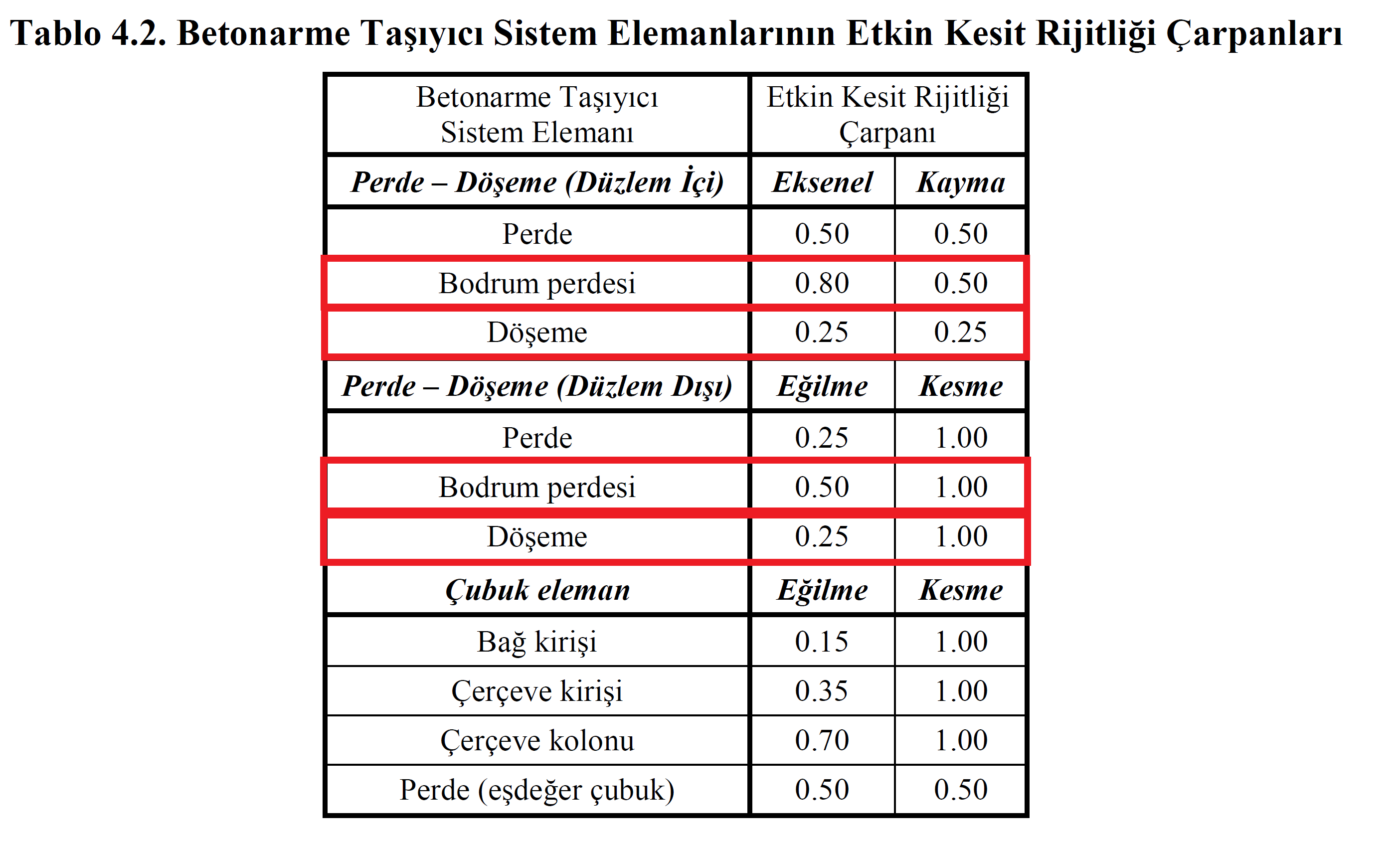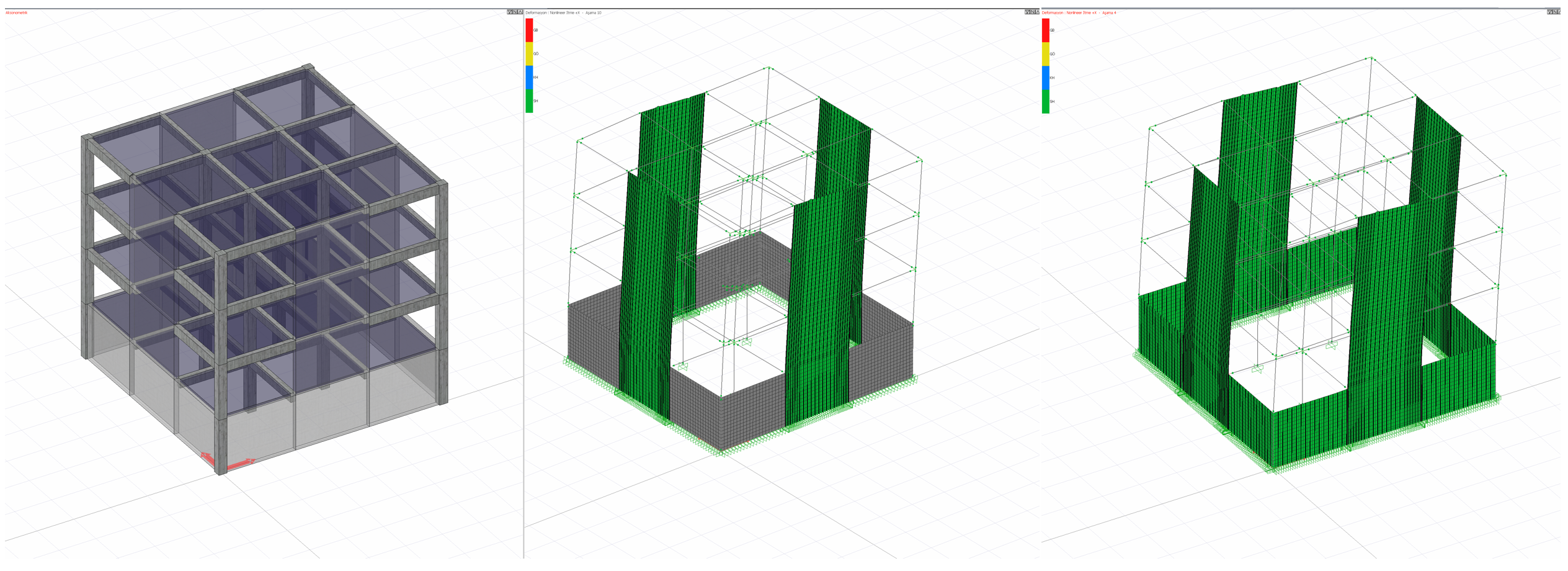Effective Section Stiffness Definition According to Table 4.2 (5.4.4)
Slabs are modeled linearly.
Basement shearwalls, linear or non-linear modeling option is under user control.
Analysis model is created automatically in the linear model option of basement shearwalls.
In the non-linear modeling option of basement shearwalls, a diffuse plastic behavior model is used and the analysis model is created automatically.
The effective section stiffnesses of the slab and basement shearwalls are determined automatically.
Under normal conditions, under the influence of earthquake loads, plastic deformation is not expected in floors and basement walls. For this reason, floors and basement walls are modeled with linear shell finite elements (shell) and the effective section stiffnesses are determined according to the coefficients marked in red in the picture below according to TBDY Table 4.2 .

Basement walls are modeled with shell finite elements in accordance with TBDY Article 4.5.3.7 . According to Article 5.4.4 of TBDY , basement walls are defined in accordance with the modeling rules applied in Section 4.5.5 , ie the DOT approach. It is explained in detail under the heading of "Modeling Basement Shearwalls" .
Non-linear modeling technique can also be used in basement curtains at the user's discretion. In non-linear modeling of basement curtainsThe Distributed Plastic Behavior Model is used. In the picture below, the three-dimensional building model, the linearly modeled analysis model of the basement walls and the analysis model of the basement walls using nonlinear modeling are seen, respectively.

Modeling of Basement Curtains
4.5.5.1 - Basement curtains arranged all around in buildings with basements are structural system elements that take all or most of the inertia forces that occur in the upper floors with transition floors (See 4.5.7) and transfer them to the foundation and at the same time meet the ground impulses in an earthquake.
4.5.5.2 - Basement walls shall be modeled with shell finite elements according to 4.5.3.7.
Related Topics
